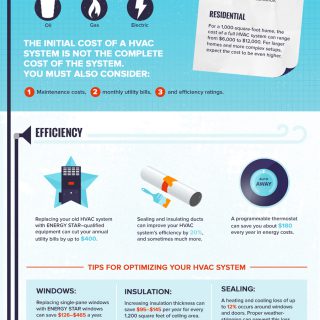The Ultimate Guide To Comprehending Warm Pumps - Exactly How Do They Function?
The Ultimate Guide To Comprehending Warm Pumps - Exactly How Do They Function?
Blog Article
Content By-Forrest Hanna
The very best heat pumps can conserve you considerable amounts of cash on energy bills. They can additionally help reduce greenhouse gas exhausts, specifically if you utilize electricity in place of nonrenewable fuel sources like gas and heating oil or electric-resistance furnaces.
Heat pumps work quite the like air conditioners do. This makes them a feasible choice to traditional electric home heating unit.
How They Work
Heatpump cool homes in the summertime and, with a little assistance from electrical power or gas, they provide some of your home's home heating in the winter season. They're a good alternative for people that intend to lower their use nonrenewable fuel sources yet aren't all set to change their existing furnace and a/c system.
They count on the physical fact that also in air that seems too cool, there's still energy existing: cozy air is constantly moving, and it wishes to relocate right into cooler, lower-pressure atmospheres like your home.
The majority of power STAR certified heat pumps operate at near their heating or cooling capacity throughout a lot of the year, lessening on/off biking and conserving power. For the very best efficiency, focus on systems with a high SEER and HSPF score.
check this link right here now of the heat pump is the compressor, which is additionally known as an air compressor. This mechanical flowing tool makes use of potential energy from power development to boost the stress of a gas by reducing its quantity. It is different from a pump because it just works on gases and can't collaborate with liquids, as pumps do.
Atmospheric air gets in the compressor with an inlet valve. It travels around vane-mounted arms with self-adjusting length that divide the inside of the compressor, creating numerous cavities of varying dimension. The rotor's spin forces these cavities to move in and out of stage with each other, compressing the air.
The compressor reels in the low-temperature, high-pressure refrigerant vapor from the evaporator and compresses it into the warm, pressurized state of a gas. This process is repeated as required to supply home heating or air conditioning as needed. The compressor also includes a desuperheater coil that reuses the waste warm and adds superheat to the cooling agent, changing it from its liquid to vapor state.
The Evaporator
The evaporator in heat pumps does the same thing as it performs in refrigerators and a/c, transforming fluid cooling agent right into an aeriform vapor that removes warmth from the space. Heatpump systems would certainly not work without this critical tool.
This part of the system lies inside your home or building in an indoor air handler, which can be either a ducted or ductless system. It includes an evaporator coil and the compressor that presses the low-pressure vapor from the evaporator to high pressure gas.
Heatpump soak up ambient warm from the air, and afterwards utilize electricity to transfer that warm to a home or business in heating setting. That makes them a whole lot a lot more energy efficient than electric heating systems or heaters, and since they're making use of clean power from the grid (and not melting fuel), they additionally create much fewer discharges. That's why heatpump are such great environmental choices. (In https://theconversation.com/5-tips-to-make-your-fuel-tank-last-longer-while-prices-are-high-180134 to a big reason they're ending up being so prominent.).
The Thermostat.
Heat pumps are fantastic alternatives for homes in chilly climates, and you can use them in mix with typical duct-based systems or even go ductless. They're a wonderful alternative to fossil fuel heating systems or typical electric heaters, and they're more lasting than oil, gas or nuclear heating and cooling devices.
Your thermostat is the most vital component of your heat pump system, and it works very in a different way than a conventional thermostat. All mechanical thermostats (all non-electronic ones) job by utilizing substances that change dimension with boosting temperature, like curled bimetallic strips or the expanding wax in a cars and truck radiator valve.
These strips contain two various types of steel, and they're bolted together to form a bridge that finishes an electric circuit connected to your a/c system. As the strip obtains warmer, one side of the bridge increases faster than the various other, which triggers it to bend and indicate that the heating unit is required. When the heat pump is in heating mode, the turning around shutoff turns around the circulation of refrigerant, to ensure that the outdoors coil now functions as an evaporator and the indoor cylinder comes to be a condenser.